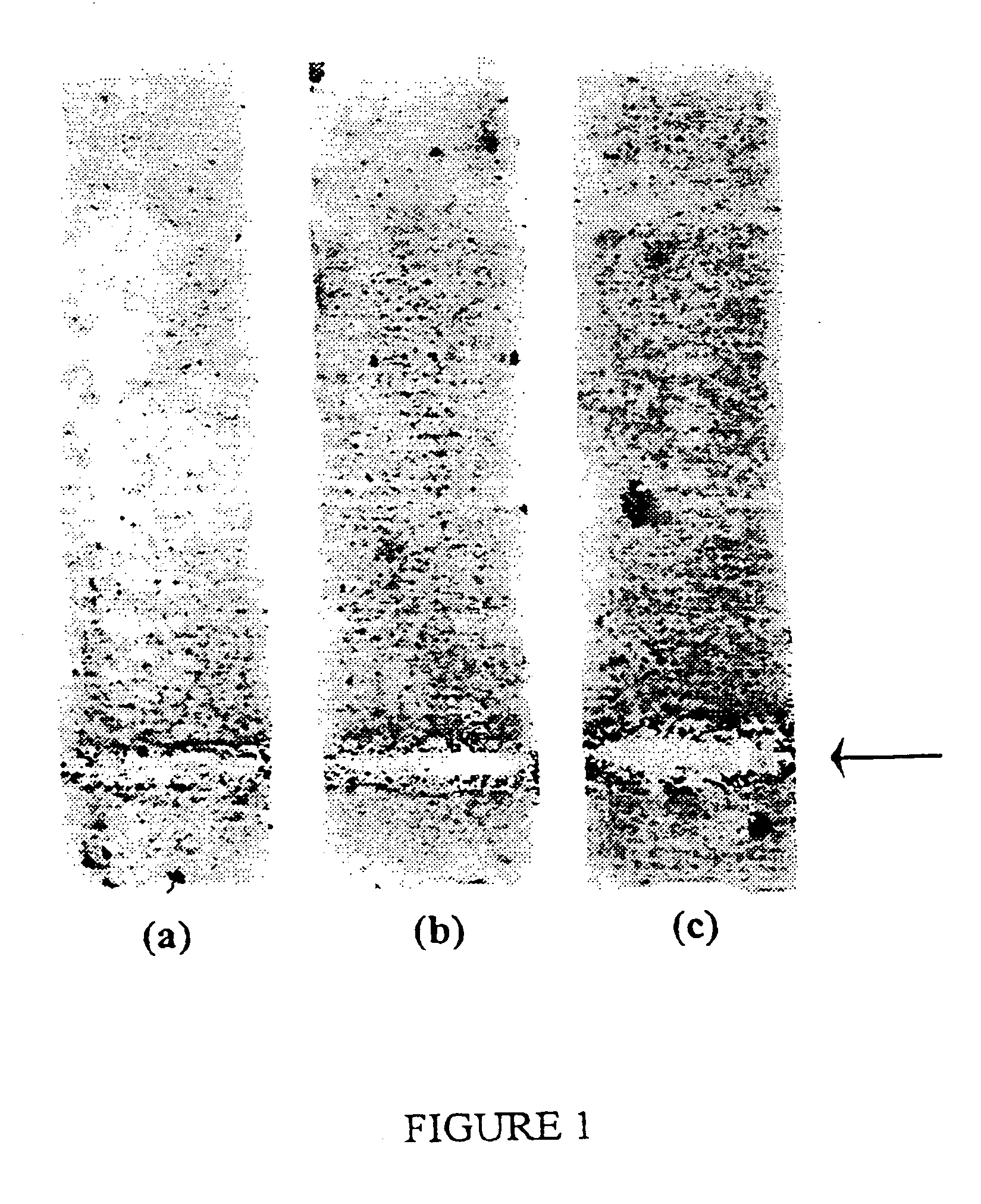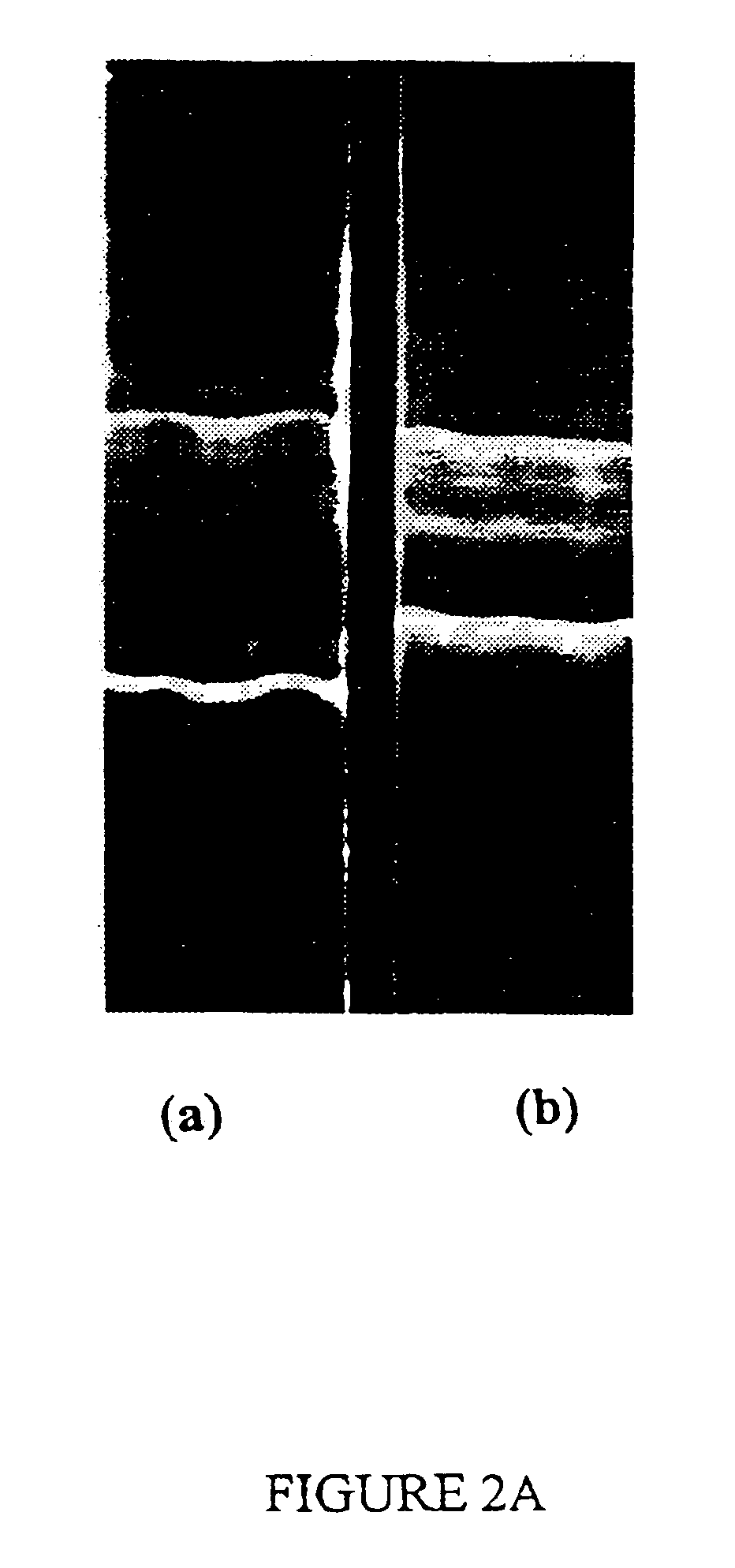Method of controlling fungal pathogens, and agents useful for same
a technology of fungal pathogens and agents, applied in the field of sugar acid, can solve the problems of large losses in productive capacity of agriculturally significant plants, many millions of dollars in lost profits annually, and fungal cell death
- Summary
- Abstract
- Description
- Claims
- Application Information
AI Technical Summary
Benefits of technology
Problems solved by technology
Method used
Image
Examples
example 1
Use of Pseudomonas Strain AN5 as a Biocontrol Agent Against G. graminis var tritici (Take-all)
[0199]In small scale field trials, the inventors were able to consistently increase wheat yield at different dry-land trial sites in New South Wales, Australia, from between 12% to 36% (PPseudomonas strain AN5 (Table 1).
[0200]
TABLE 1Summary of wheat yields (Kg / plot)Trial ΔAN5Ba1Ba2Ba3Pf5ControlGoolgowi10.2311.00*n.tn.t8.86{circumflex over ( )}9.07Forbesn 10.76 10.2811.28*10.95*9.70{circumflex over ( )}9.12West Wyalong 5.70*5.88*5.175.414.65{circumflex over ( )}4.32nt, not tested;{circumflex over ( )}not significant;*significant at p
[0201]Subsequently, the Harden District Rural Services (HRS) group has established large scale trials using Pseudomonas strain AN5 in acre plots at a trial site at Harden, New South Wales, Australia. Prior to the commencement of the trial, there was significant take-all disease at this site. Following biocontrol treatment using Pseudomonas strain AN5, the treat...
example 2
Biocontrol of Botrytis fabae (Chocolate Spot Fungus) Using Pseudomonas Strain AN5
[0203]Chocolate spot (causative agent Botrytis fabae) is a significant disease of faba beans. Currently, fungicides are applied a number of times during the growing season.
[0204]We have shown that Pseudomonas strain AN5 is effective against the chocolate spot disease of faba bean, and is able to suppress the growth of B. fabae, in bioassays carried out in vitro.
[0205]In the glasshouse, the present inventors were able to induce chocolate spot by spraying B. fabae fungus onto the plant. Symptoms of the disease were observable within a few days of spraying. A scale was devised to score the severity of disease symptoms, and, using this scale, plants sprayed with biocontrol bacteria comprising Pseudomonas strain AN5, either before or after inoculation with B. fabae, were shown to have reduced symptoms by up to 90%, compared to untreated plants. The present inventors have further shown that up to 95% protecti...
example 3
Identification of an Anti-Fungal Compound in Pseudomonas sp. Which is Active Against G. graminis var tritici (Take-all)
Microbiological and Molecular Biological Methods
[0207]Standard methods were employed as described by Nayudu and Holloway, (1981), Nayudu and Rolfe (1987), Nayudu et. al., (1994a) and Nayudu et al., (1994b).
Bacterial Strains
[0208]Pseudomonas strains designated AN5, Pf5, and AN5 rif, possess anti-fungal activity against take-all, and were used in all experiments, unless otherwise stated. The mutant strains AN5-MN1 and AN5-MN2 do not possess significant anti-fungal activity and were used as negative controls unless otherwise stated.
Bioassay Procedure
[0209]A modification of the agar plug assay (Poplawsky et al., 1988) was used to assay for bioactivity of extracts of Pseudomonas strain AN5, or derivative strains thereof, against take-all fungus, wherein an agar overlay assay was used to test activity of specific fractions. This assay involves macerating the take-all fung...
PUM
| Property | Measurement | Unit |
|---|---|---|
| Volume | aaaaa | aaaaa |
| Volume | aaaaa | aaaaa |
| Volume | aaaaa | aaaaa |
Abstract
Description
Claims
Application Information
 Login to View More
Login to View More - R&D
- Intellectual Property
- Life Sciences
- Materials
- Tech Scout
- Unparalleled Data Quality
- Higher Quality Content
- 60% Fewer Hallucinations
Browse by: Latest US Patents, China's latest patents, Technical Efficacy Thesaurus, Application Domain, Technology Topic, Popular Technical Reports.
© 2025 PatSnap. All rights reserved.Legal|Privacy policy|Modern Slavery Act Transparency Statement|Sitemap|About US| Contact US: help@patsnap.com



